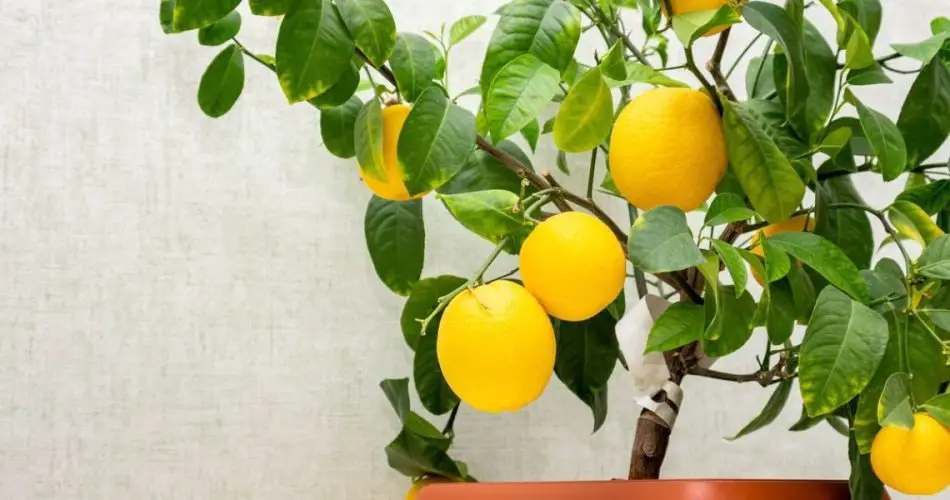
Choose the right lemon tree and the right pot

First of all, it is essential to choose the right lemon tree for your space and needs.
There are several varieties of lemon trees, some of which are better suited for container growing. Among the most popular varieties are Citrus limon ‘Ponderosa’ and Citrus limon ‘Improved Meyer’ .
These two varieties are recognized for their resistance to cold and their ability to grow in pots.
Next, you will have to choose a pot adapted to the size of your lemon tree. For a young plant, a pot with a diameter of about 40 cm will be sufficient.
Be sure to choose a pot with a drainage hole in the bottom to prevent water from pooling and causing root rot. You can also add a saucer under the pot to catch excess water.
The ideal substrate for a potted lemon tree
The choice of substrate is essential to ensure good growth of your lemon tree.
Indeed, it should be light, draining and rich in nutrients. You can opt for a mixture composed of:
- 60% soil for Mediterranean or citrus plants,
- 20% compost or well-decomposed manure,
- 10% river sand,
- 10% perlite or vermiculite to ensure good drainage.
Do not hesitate to periodically check that the substrate does not become too compacted and stir it slightly to avoid the formation of crusts on the surface.
Water and nutrient needs of the potted lemon tree
Lemon trees have fairly large water needs, especially when grown in pots.
It is important to make sure you water them regularly, being careful not to drown them. In general, one watering every two or three days is sufficient during the growth and fruiting period.
Be sure to reduce watering in winter, when the plant is dormant.
When it comes to nutrients, lemon trees need a lot of nitrogen to grow well and produce fruit. Opt for a specific fertilizer for citrus fruits, rich in nitrogen, potassium and phosphorus.
You can also add compost or well-rotted manure to your growing medium to provide additional nutrients.
Pruning and caring for your potted lemon tree
Pruning the lemon tree is an important step to ensure good fruiting and prevent the tree from becoming too bulky.
Here are some tips to properly prune your lemon tree:
- Prune dead, damaged or diseased branches throughout the year,
- At the end of winter, prune branches that cross or grow into the tree,
- Remove the shoots that grow at the base of the trunk,
- Ventilate the foliage by thinning overly dense branches.
In addition to pruning, remember to regularly check the health of your lemon tree. Treat it with a natural insecticide in case of infestation with aphids, scale insects or other pests.
You can also spray soapy water on the leaves to kill pests.
Pollination and fruiting.
Lemon trees are self-fertile trees, meaning they can be pollinated without the need for another tree.
However, hand pollination can help you achieve better fruit set. To do this, simply pick up pollen from the stamens of one flower with a brush or cotton swab, then place it on the pistil of another flower.
Repeat the operation on several flowers to increase your chances of success.
Potted lemon tree fruiting can be temperamental and depends on many factors, such as variety, age of tree, growing conditions, and care.
However, with a little patience and attention, your lemon tree should offer you beautiful, juicy and tasty fruits.
By following these tips, you should be able to successfully grow and maintain a potted lemon tree. Whether enjoying its fruit, evergreen foliage, or spellbinding fragrance, the lemon tree is a true asset to your garden or patio. So don’t hesitate, go on the adventure and enjoy your own lemons!